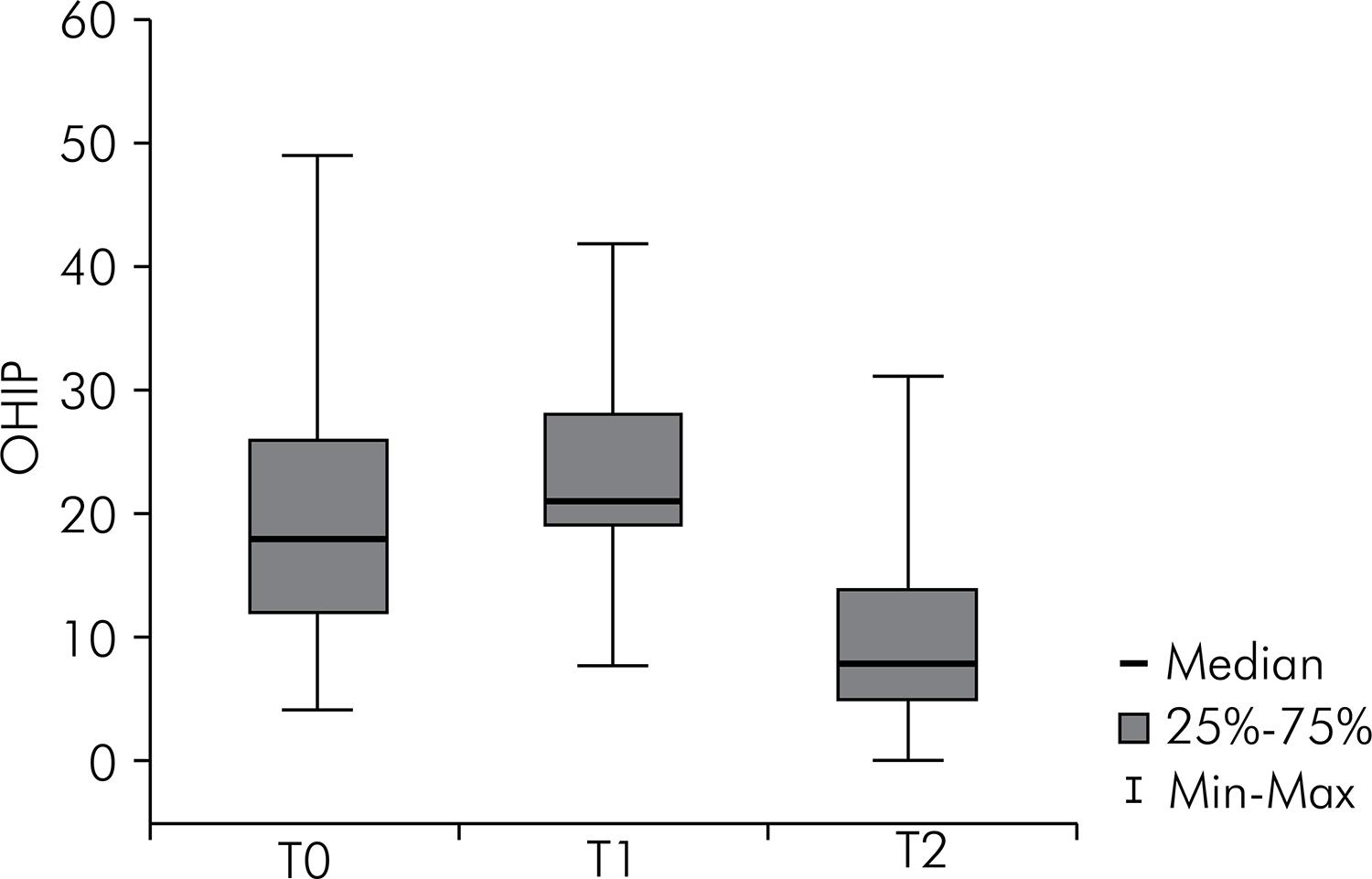Dental treatment and surgery is a well-established method of correcting dentofacial deformities, and such treatment has an impact on the quality of life of individuals. The objective of this study was to evaluate the effect of orthognathic surgery on the quality of life of patients receiving treatment at the Universidade Federal do Paraná – UFPR. Clinical data were evaluated for the control group, and a quality-of-life evaluation questionnaire was completed [Oral Health Impact Profile (OHIP-14)]. For the case group, the same data were gathered along with information regarding their dentofacial deformity. The OHIP-14 questionnaire was also completed at three distinct stages of the experiment. The median age in the control group was 23.5 years. In the case group, the predominant gender was female, and the mean age of patients was 29.4 years. There was a statistically significant association between gender and OHIP-14 (p< 0.001). No such association was observed between age and OHIP-14 scores (p= 0.616). In the control group the OHIP-14 median score was 11.5. In the case group, the average OHIP-14 score at was 18 at T0, 21 at T1, and 8 at T2. The results demonstrated a statistically significant association between the three time stages at which OHIP-14 was analyzed (p< 0.001). There was a smaller reduction in the negative impact for transversal deformities of the jaw when compared with other deformities. Orthognathic surgery led to a reduction in the negative effects on the quality of life of patients.
Orthognathic Surgery; Dentofacial Deformities; Quality of Life

